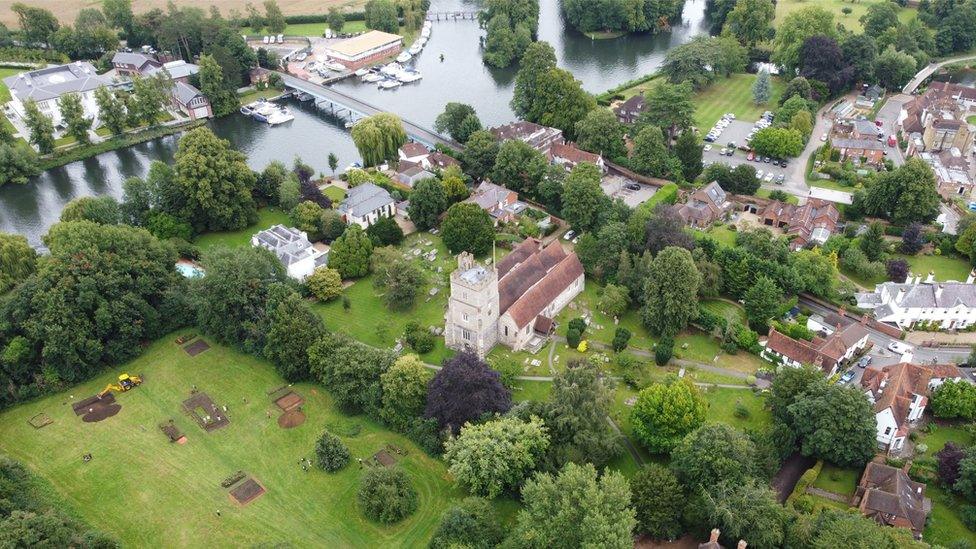Forgotten River Thames trading hub unearthed after 1,000 years
- Published
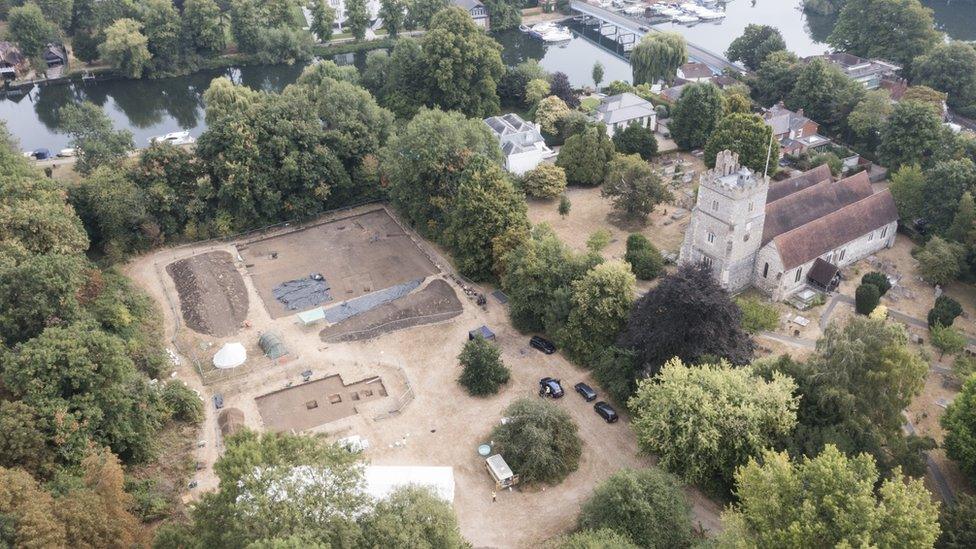
The site excavated lies next to Cookham's Holy Trinity Church
Archaeologists have unearthed a long-forgotten trading hub that researchers say would have enjoyed comparable status to London in the Middle Ages.
The find on the banks of the Thames in Cookham, Berkshire, has been hailed as "a once in a generation discovery" by the University of Reading.
It includes infrastructure that suggested the area was used extensively for importing and exporting goods.
The university said the site was abandoned in the late 9th Century.
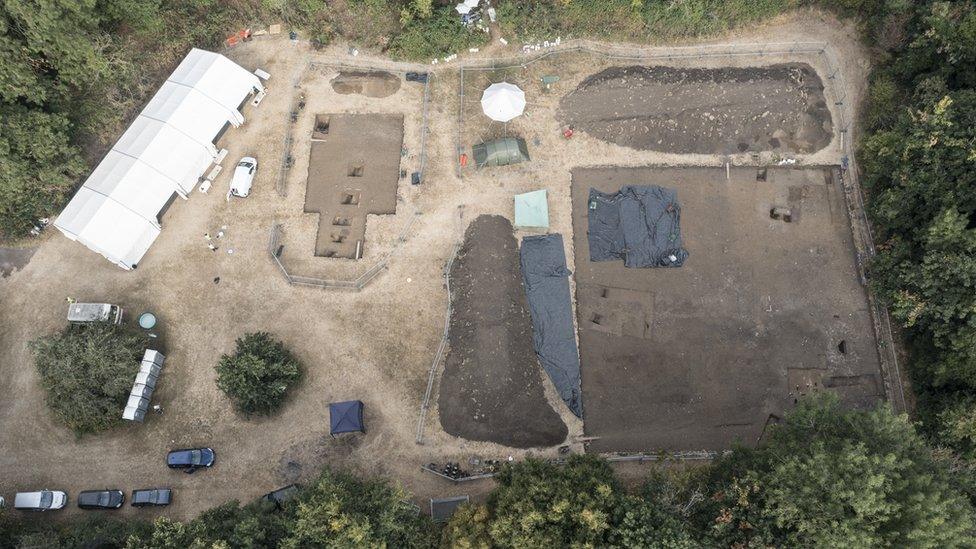
University students and staff spent four weeks excavating the site
Archaeologists began work on the land next to the Holy Trinity Church after evidence pointed to it being the site of a "lost" 8th Century monastery.
The excavation team said what it went on to find "ranks alongside the most extensively preserved early medieval monastic sites ever investigated in Britain".
They found evidence of a waterside loading area, workshops for industrial activities like metalworking, and bread ovens to feed the local population.
The university said the area "could have enjoyed similarly important status as a trade and production centre to larger towns like London and Southampton".
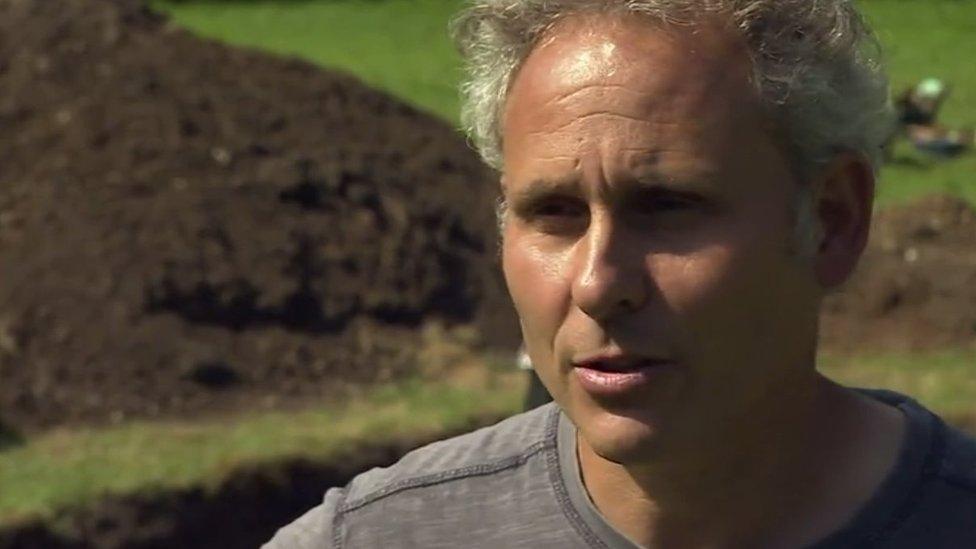
Archaeologist Gabor Thomas said the discoveries would lead to a better understanding of daily life at the monastery
Gabor Thomas, the excavation's lead archaeologist, said: "This is a once in a generation archaeological discovery.
"We have not just rediscovered the location of this monastery but shown that it's in a remarkable state of preservation.
"We have uncovered a densely occupied riverside trading and production zone, complete with streets and loading areas.
"This level of infrastructure and planning is surprising and compares with larger trading and production sites known as 'wics' that were the only towns of the period."
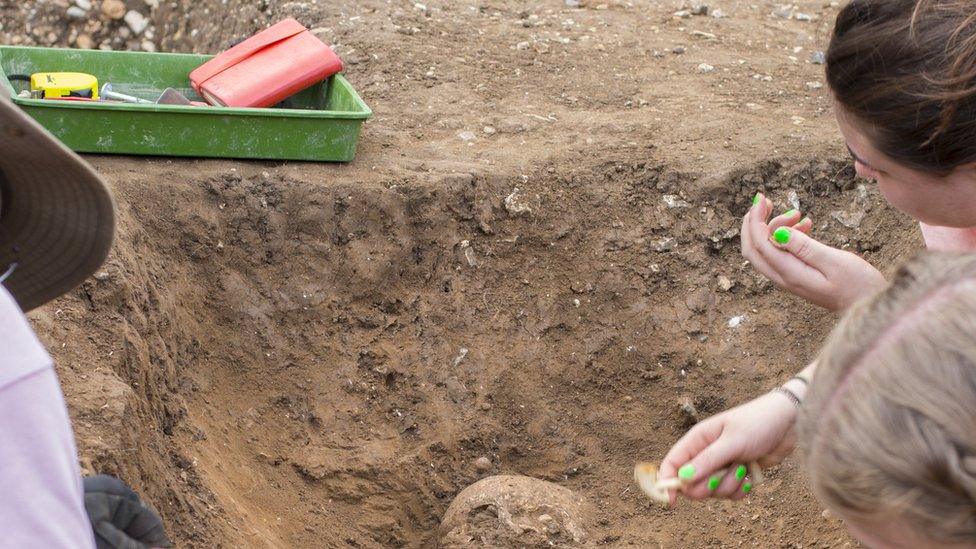
The excavation was part of a summer field school project run by the university
He said Cookham's population would have been considerably smaller than London but similarities in the way the monastery was organised reflected "its importance as a place of trade and production on the River Thames".
"The discoveries at Cookham will enable us to build a detailed picture of daily life within a monastery of this period, including Cookham's role as an economic hub for the Middle Thames region," he added.
The monastery is believed to have thrived in the 8th and early 9th centuries, reaching its peak under the control of powerful Anglo-Saxon queen Cynethryth.
Cynethryth was the only Anglo-Saxon queen known to have been depicted on a coin and had been married to King Offa, who ruled one of the era's main kingdoms, Mercia, until his death in 796 AD.

Follow BBC South on Facebook, external, Twitter, external, or Instagram, external. Send your story ideas to south.newsonline@bbc.co.uk, external.
Related topics
- Published19 August 2021
